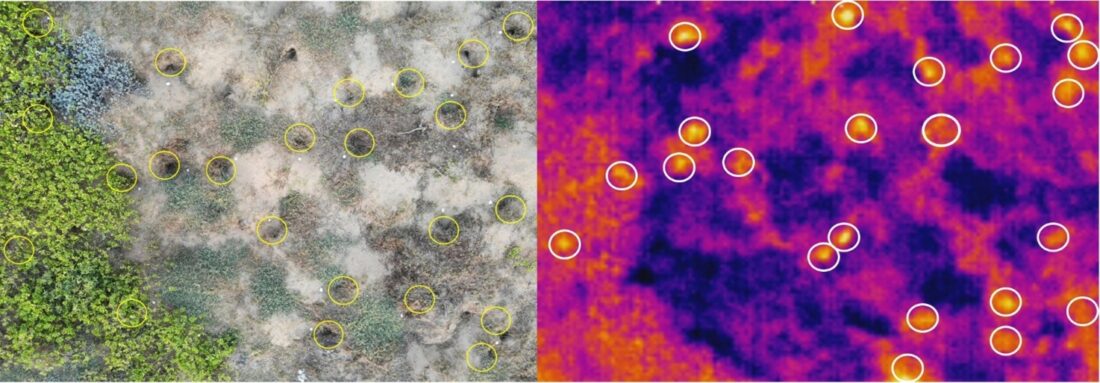Thermal Imaging Drone Program


Burrow-nesting petrels and shearwaters include some of the seabird species most vulnerable to extinction and species with some of the largest knowledge gaps. Much of this is due to their cryptic, nocturnal habits and their tendency to nest in underground burrows that are often inaccessible. Locating nests, or in some cases, even entire colonies, can be difficult. The use of unoccupied aerial vehicles (drones) in conservation biology has accelerated in recent years. Still, few studies have examined the potential to combine traditional visible spectrum photography with infrared thermal imaging to survey wildlife. In 2019, we began using drone imagery to conduct surveys for both seabirds and invasive predators. We used a combination of RGB (regular visual images) and thermal imaging to visualize the heat signatures from cryptic animals. We tested using thermal imaging cameras mounted alongside traditional RGB cameras to detect the heat signatures of cryptic burrow-nesting seabirds. Initial results indicate the thermal images taken by the drone were able to detect the presence of birds in burrows by the signature of heat venting from the burrow entrance. We have also developed Artificial intelligence (AI) algorithms to identify the entrances to seabird burrows in open (non-vegetated environments). This work will soon be published as a chapter in the forthcoming book A Manual for Drone Applications in Wildlife Research, Management and Conservation.
